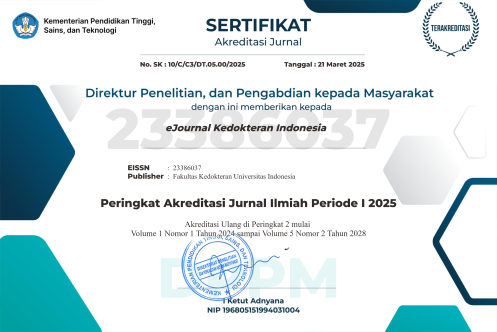Characteristic of Skin Diseases in Two Public Boarding Schools Occupantsin West Java 2018
DOI:
https://doi.org/10.23886/ejki.11.217.14Keywords:
skin diseases, boarding schools, pediculosis, scabiesAbstract
Skin diseases are among the most common diseases found in developing countries, and it is very commonly encountered especially in children living in groups. This study aimed to identify the ten most common skin diseases in two public boarding schools in West Java and the environmental factors that influence them. This study was part of large scabies and pediculosis study in two public boarding schools on 2018 in West Java. Diagnosis was made through history taking and physical examination using Deskabâ instrument. The results showed that 93% of children had skin diseases. Skin diseases were found to be higher in girls (94.5%) than in boys (91.1%), but no significant differences (p= 0.08) were obtained. The most common skin diseases were pediculosis (50.14%), scabies (40.51%), dermatitis (8.15%), dermatophytosis (6.6%), insect bite hypersensitivity (6.18%), post-inflammatory hypo/hyperpigmentation (4.92%), acne vulgaris (3.51%), miliaria (3.37%), xerosis cutis (2.25%), and folliculitis (1.83%). Some environmental factors might influence the incidence of infectious skin diseases in public boarding schools, such as open-space areas, the number of bedrooms, and the number of individuals occupying each bedroom.
Downloads
Downloads
Published
How to Cite
Issue
Section
License
Copyright (c) 2023 Sandra Widaty, Joses Saputra, Novita Suprapto, Joanne Natasha, Mochamad H Azis, Dewi Lestarini, Lili Legiawati, Lis Surachmiati, Yudo Irawan

This work is licensed under a Creative Commons Attribution-NonCommercial 4.0 International License.
Accepted 2023-05-30
Published 2023-05-31



